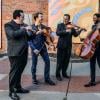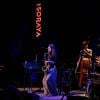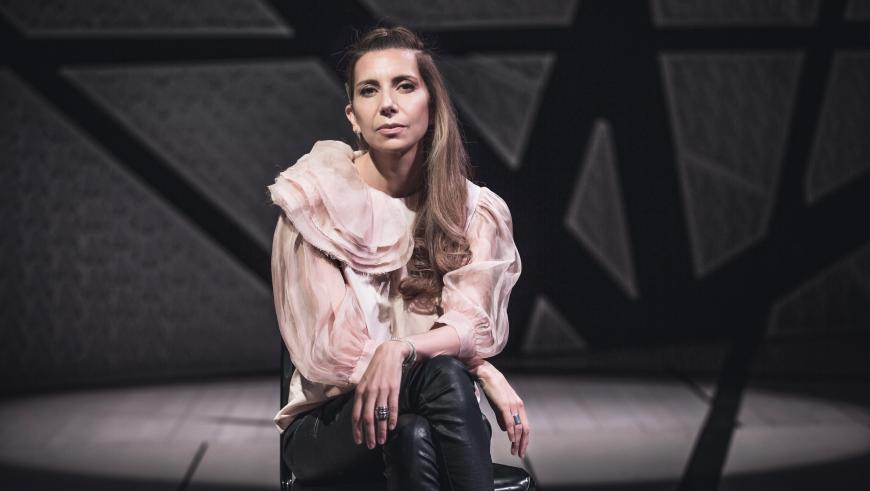
Magos Herrera, born in Mexico City and now based in New York, has been hailed by Latin Jazz Network as “one of the greatest contemporary interpreters of song,” while NPR described her as “recalling great communicators like Édith Piaf or Billie Holiday.” Indeed, whether dazzling audiences with her smoky-voiced stylings as a solo artist, singing in Spanish, English, or Portuguese, or collaborating with the adventurous string quartet Brooklyn Rider, this singer-songwriter, producer, and educator has it all — and then some.
Having released Dreamers with Brooklyn Rider in 2018, an album that celebrates the power of beauty as a political act — the title refers to young undocumented immigrants who were brought to the States as children — Herrera is currently on a U.S. tour with the quartet and will be performing at the Green Music Center at Sonoma State University on May 11 and at The Soraya in Northridge on May 13.
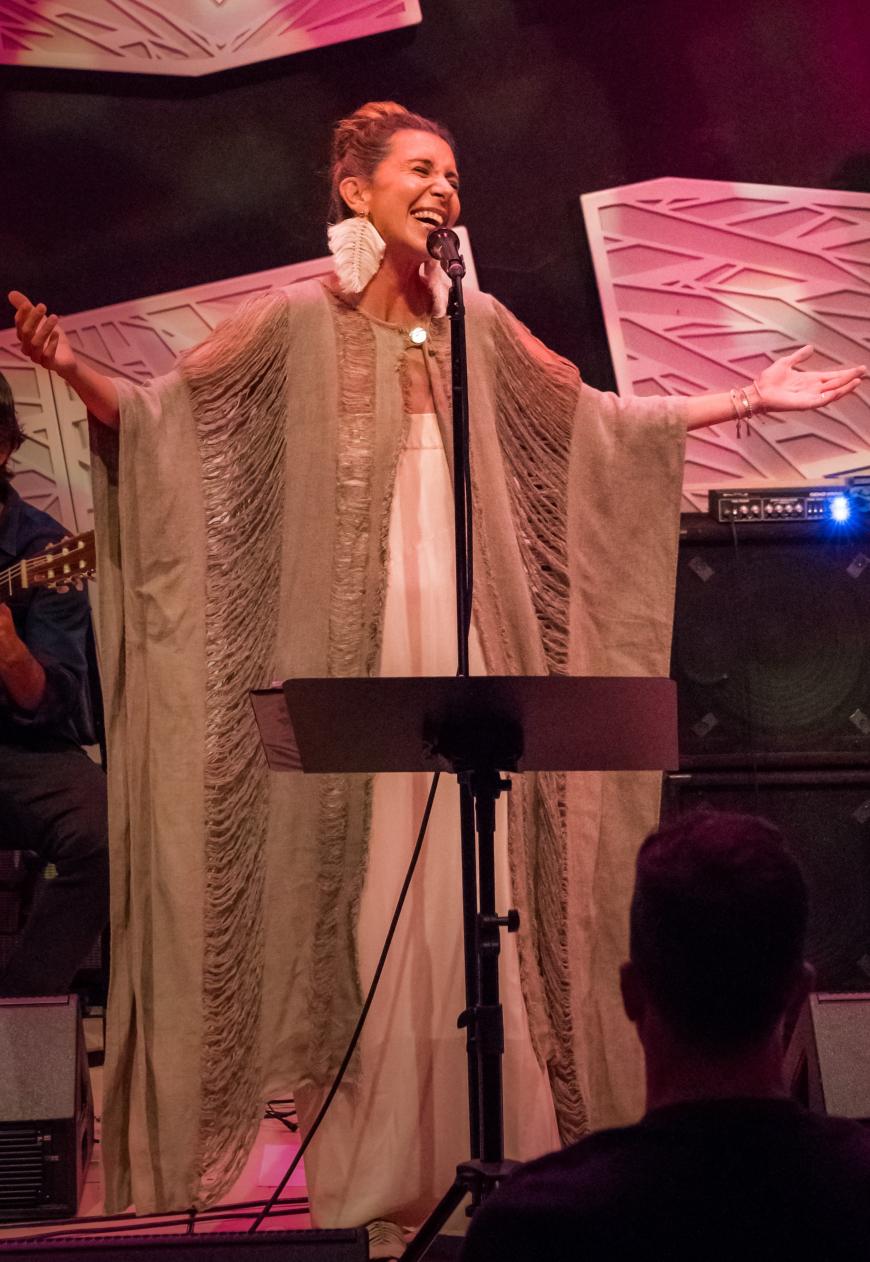
Herrera graduated from the Musicians Institute in Los Angeles in 1992 and then went to Boston to continue her studies in contemporary improvisation at the New England Conservatory of Music. While in her hometown, she released five albums and was also part of the compilation series Mexican Divas (2001 and 2003). Moving to New York in 2008, Herrera embarked on multiple projects, collaborating with artists such as the Kronos Quartet’s then-cellist Jeffrey Zeigler, visual artist Erika Harrsch, and producers Javier Limón and Tim Ries. Her latest album, Aire, which was largely recorded during the pandemic, drops this month.
In addition to her work as a musician, Herrera is a curator and artistic advisor for Brooklyn’s National Sawdust, while her honors include receiving a New Jazz Works Award from Chamber Music America in 2020. Serving as a cultural diplomatic advisor for the Mexican government, Herrera is also a passionate advocate for social justice and women’s rights and is currently a spokesperson for U.N. Women, an organization delivering policies and standards that uphold women’s rights.
Keeping a rock-star-like schedule, Herrera is part of the Mannes School of Music faculty at The New School in New York and since 2020 has been teaching vocal technique, improvisation, ear training, and songwriting privately and at music schools around the world.
Herrera spoke with SF Classical Voice by phone from her home in New York, where she was between gigs.
Was there music in your family, and when did you first know that you wanted to be a singer?
I grew up in a family that appreciates all the arts in general. My father paints, my mother writes poetry, and one of my brothers studied as a classical pianist, while I was studying dancing. But since I was very, very young — like a kid — I knew I wanted to make music, but I didn’t know it consciously. There was no tradition of being a professional musician in my family, [so] when I decided to become a musician, this was foreign territory.
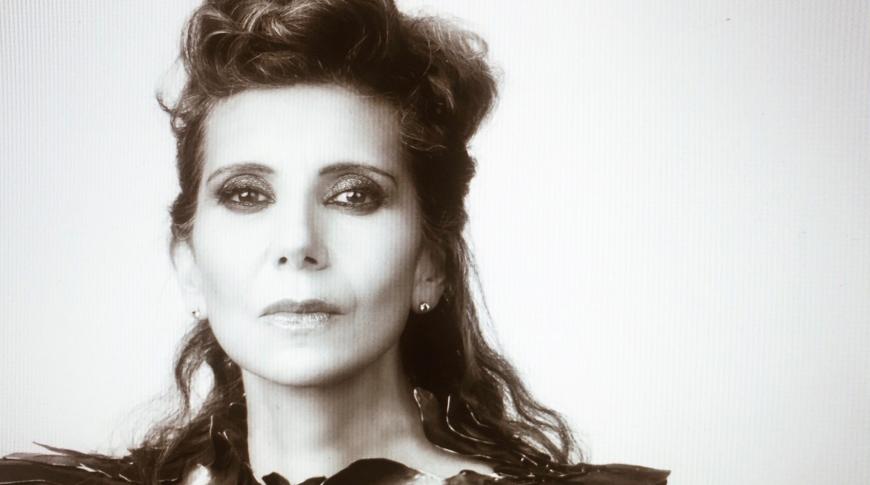
I went to Italy to study fashion design and painting. To pay my bills, I used to sing in bars and clubs in Italy. I went to a jazz concert and saw this woman singing and improvising, and it blew my mind. This is freedom [that] I saw in her singing — this is the call I was waiting for, and everything evolved from that.
And what an evolution it’s been! How would you describe your style, and how do you define the term “Latin jazz,” as there are some folks who object to the phrase?
I have to say I don’t like definitions in general. Definitions tend to limit. I think music moves in directions that are way beyond definitions, especially these days, [like] the extension of boundaries in storytelling. I would just say that I consider myself more of a storyteller than anything else.
And the way I approach music, the way I phrase, all these elements — it’s clearly as a jazz singer — the harmonies I like to use, the nuances. Through my exploration in music, I also use elements from chamber music and traditional music from Latin America. I have to say this universality of jazz is also an element of whatever I do — the kind of musicians I’m surrounded by, the way I like music to be written, the arrangements, how I phrase. So, I’m a storyteller with many influences.
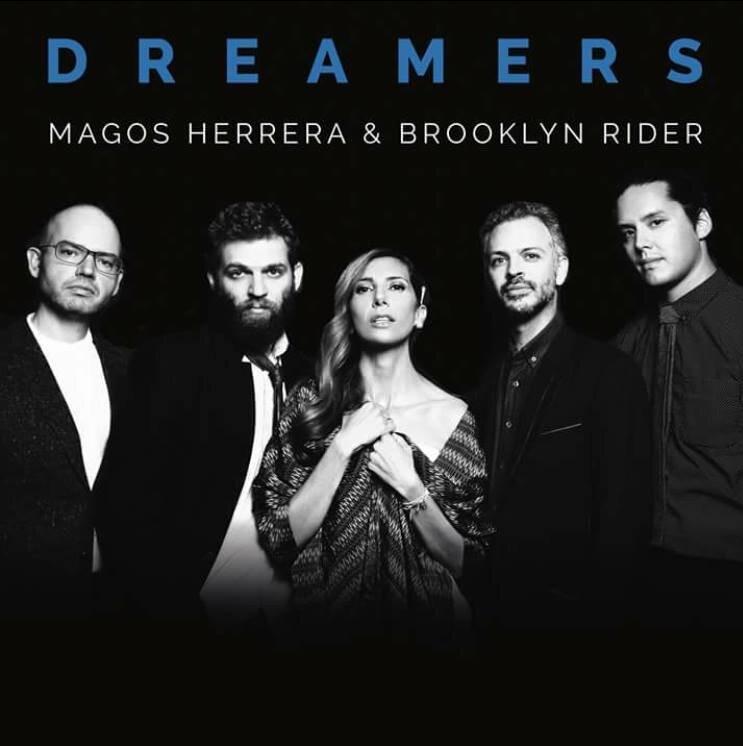
You tell many stories on Dreamers, and now, you’re on tour. The album — and concert —explore the artistry of Violeta Parra, Caetano Veloso, Federico García Lorca, Octavio Paz, and others. What was the genesis of Dreamers, and how did you come to work with Brooklyn Rider — violinists Johnny Gandelsman and Colin Jacobsen, violist Nicholas Cords, and cellist Michael Nicolas, who are also known for their genre-smashing originality?
The genesis was my response to Trump’s America — all his terrible ideas of the simplified definition of being an immigrant — that they’re criminals. My natural response was through music. I could change the narrative and perspective. There are a thousand ways to define what an immigrant is. With Dreamers, what I wanted to do was portray the greatness of the Latin American songbook through these thinkers, singers, and writers from Spain and Latin America who lived through dictatorships and absolutist politics.
These thinkers wrote incredible poems and songs. The value of these words still resonates with us these days, reminding us of the importance of inclusiveness, humanism — all the values that move our civilization forward. [So] the idea was to collaborate with a string quartet of this caliber — an American quartet — [who] completed the story.
It wasn’t only a Mexican immigrant telling a story but incredible American musicians. It made the narrative more universal, which was more important. We’d never performed [together] before this recording. I knew [they were] open-minded and comfortable navigating different ideas — the way they perceive music. It was a perfect match.
OK, so you just called them out of the blue?
We were introduced by our common friend, composer Paola Prestini, and then I called them. I proposed the narrative, the repertory, and they were enthusiastic about it. We worked together in defining the arrangers, and I musicalized some poets — Octavio Paz, some of his pieces, Rubén Darío from Nicaragua — and then we released the album. We toured a bit, and then COVID hit, so we reopened our tour in January, and The Soraya will be the last one for this year.
You cover a lot of musical, literary, and geographical territory — a veritable sonic melting pot. What do you want audiences to take away from Dreamers?
We have presented it in many places in the U.S. and Mexico, and what we feel from audiences is it’s an invitation to dream. This narrative is so timely, even now — not only with Trump’s America but post-COVID — it’s a super devastating time. It’s taking time for all of us around the globe to continue the natural flow of things. We’re facing a new world.
Many things have changed, and it’s taking a lot of effort to adapt to a new reality. The idea of dreaming and reflecting on this idea is so important because now we’re creating the future. How do we want to live [in] this new era? How are we going to relate to others after a devastating time, with the virtual world taking over? The way we share music — cities aren’t happening anymore because people prefer to do video conferences instead of travel.
It’s a new reality, but it’s important not to move forward with inertia but [instead ask] how we are going to put ourselves into this way of living in a world of polarization. There are so many challenges. What I would love people to feel is the value of these incredible thinkers, what makes us human — always to go back to the reflection of what we dream, what we aim for, [and] always keep asking these questions and creating new realities for the future.
Activism will, no doubt, still be in your future and is still very much in your present. You recently performed at the 67th session of the U.N. Commission on the Status of Women in collaboration with Paola Prestini and other musicians. What was that like, and were you always an activist?
I was invited 12 years ago by U.N. Women to be a spokesperson. It was a natural decision to make. I remember feeling [like] a pioneer in so many ways, without knowing. I come from a country where jazz was not mainstream. I’ve been breaking ground for so many years as a musician, singer, artist, woman, immigrant. I think all these had created awareness and an assimilation to grow as an artist and to be able to express the fullest of my capabilities.
When this invite came about, it was, for me, a call — to have this opportunity, to be a person who travels the world, and you’re able to spread this need, this advocacy for gender equality and nonviolence.
So, in March we presented at the U.N. headquarters at the global conference, where delegates from all over the world come to define gender equality, and they chose [my album] Con Alma as part of the conference. To add music and arts into the discussion, it was so beautiful.
Correction: As originally published, this article misstated the starting year of Herrera’s teaching position at Mannes School of Music: It was 2020, not 2000.


